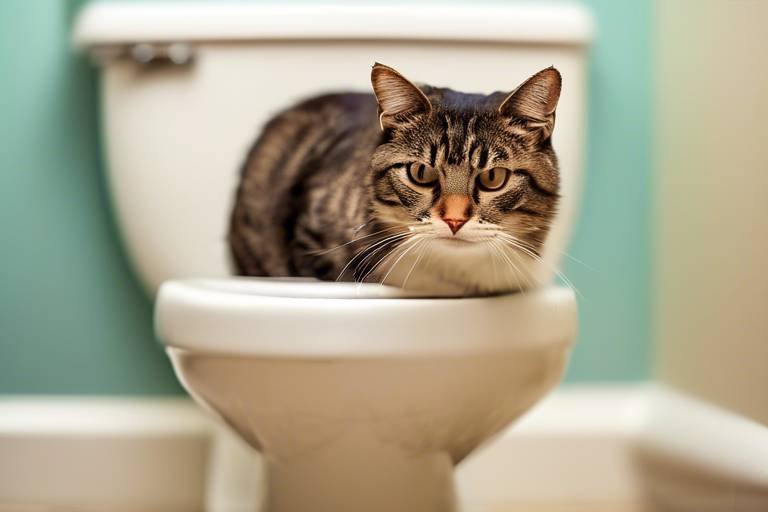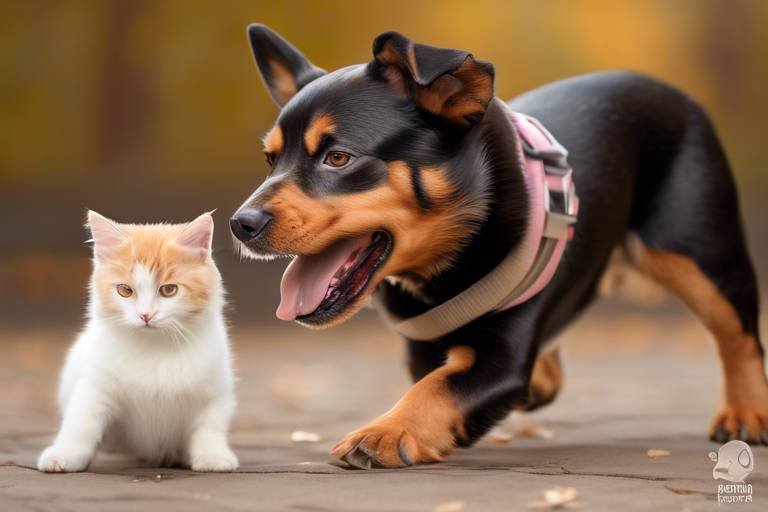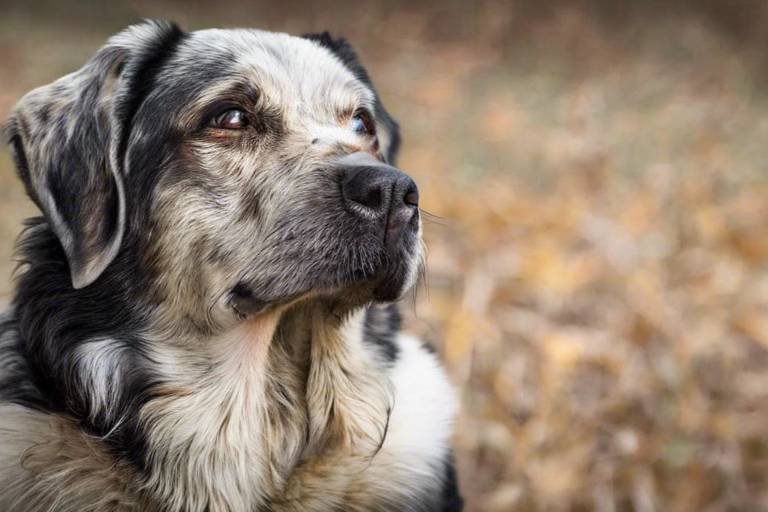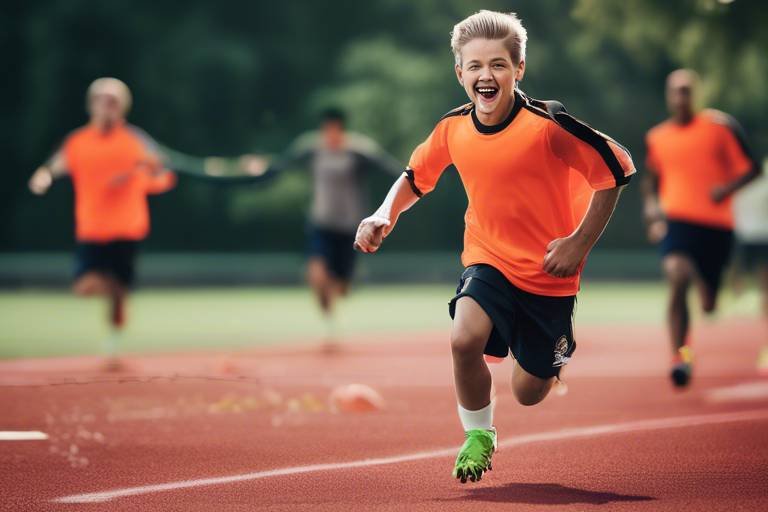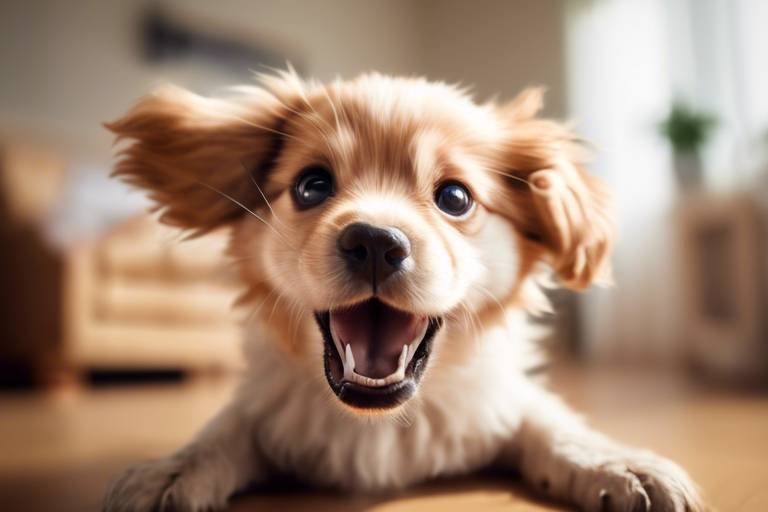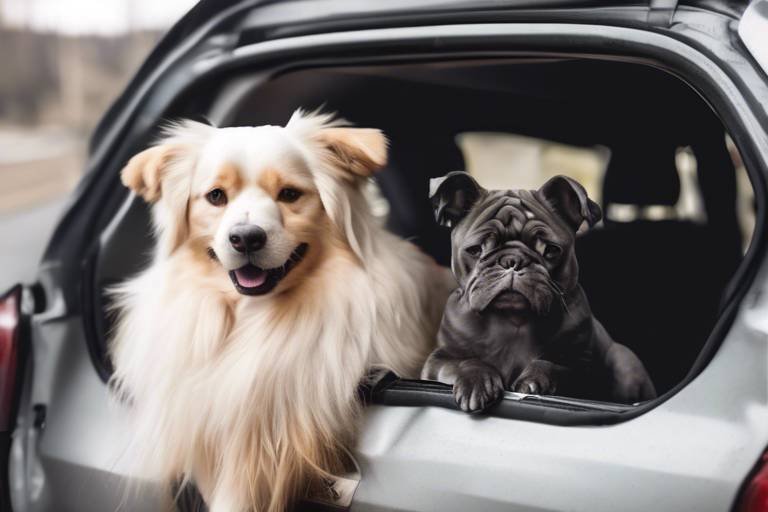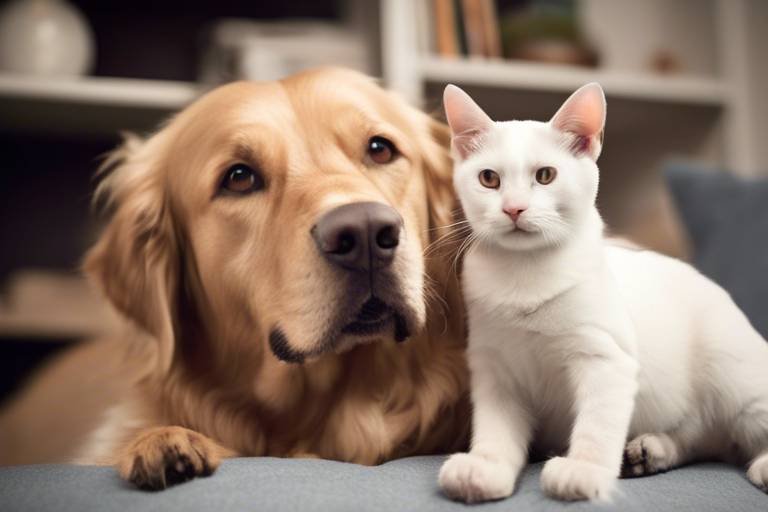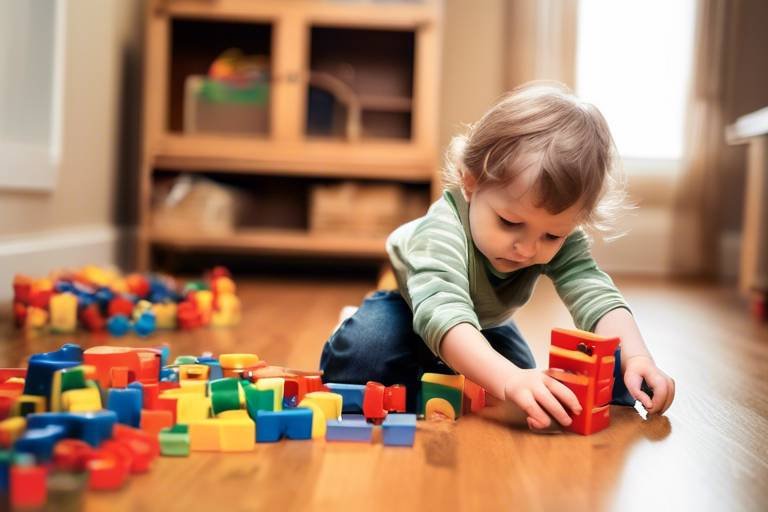Tips for Teaching Your Pet to Stay Calm During Grooming
Grooming your pet can feel like a daunting task, especially if your furry friend isn’t a fan of the process. But fear not! With the right strategies, you can transform grooming sessions into a positive experience for both you and your pet. Imagine a world where your pet happily hops onto the grooming table, ready for a pampering session. Sounds dreamy, right? Well, it’s entirely possible! In this article, we’ll explore effective tips and techniques to help your pet remain calm during grooming, making it a breeze rather than a battle.
First things first, let’s talk about anxiety. Just like us, pets can experience stress and anxiety, and recognizing the signs is crucial. Have you ever noticed your dog panting excessively, hiding, or trying to escape when grooming tools come out? These behaviors are red flags indicating that your pet is feeling uneasy. Understanding your pet's body language is key to addressing their anxiety effectively. For instance, a tucked tail or flattened ears can signal discomfort. By being observant and empathetic, you can better tailor your approach to suit your pet's needs.
The environment plays a significant role in how your pet feels during grooming. A calm and soothing space can do wonders in reducing stress. Consider setting up a dedicated grooming area that is quiet and free from distractions. Soft lighting and cozy bedding can create a serene atmosphere. You might even want to add some familiar toys or blankets to make the space feel more inviting. Remember, the goal is to make your pet feel safe and comfortable, so they associate grooming with a positive experience.
Using the appropriate grooming tools can significantly impact your pet's comfort level. For example, a gentle brush designed for your pet's coat type can make a world of difference. If you have a long-haired cat, a wide-toothed comb is essential to avoid pulling their fur. On the other hand, short-haired dogs might benefit from a rubber grooming mitt. Always choose tools that are designed for your specific pet, as using the wrong ones can lead to discomfort and anxiety. Investing in quality grooming tools is an investment in your pet's happiness!
Just as important as the right tools are the products you use. Some grooming products can irritate your pet's skin or cause them to feel uneasy. For instance, avoid using shampoos with harsh chemicals or strong fragrances. Always opt for pet-friendly, hypoallergenic products that are gentle on their skin. If you’re unsure, consulting your veterinarian for recommendations can be a great step towards ensuring a pleasant grooming experience.
Incorporating positive reinforcement can turn a stressful grooming session into a delightful one. Tools such as treats, toys, and praise can be incredibly effective. When your pet remains calm during grooming, reward them with a tasty treat or a favorite toy. This creates a positive association with grooming, making them more likely to cooperate in the future. Remember, consistency is key! The more you reward calm behavior, the more your pet will understand that grooming is a good thing.
Consistency is vital in reducing anxiety. Establishing a regular grooming routine helps your pet know what to expect, which can alleviate their fears. Whether it’s a weekly brushing session or a monthly bath, keeping a schedule can help your pet feel more secure. Think of it like a comforting ritual; the more familiar they are with the process, the less anxious they will become. Over time, your pet will start to look forward to these moments of bonding, rather than dreading them.
Now that we’ve set the stage, let’s dive into some techniques to help calm your pet during grooming. One effective method is deep breathing. Just like humans, pets can benefit from a little relaxation technique. Take a moment to breathe deeply and encourage your pet to do the same. You can also use gentle handling techniques, such as stroking their back or speaking softly to them, to create a calming effect.
Did you know that playing calming music can help soothe anxious pets? Sound therapy can create a tranquil atmosphere during grooming sessions. Consider playing soft classical music or nature sounds in the background. This can help drown out any scary noises that might make your pet anxious, allowing them to relax more easily.
Gentle massage can work wonders in relaxing your pet and making grooming easier. Incorporate touch by gently massaging your pet while you groom them. This not only calms their nerves but also strengthens your bond. Think of it as a spa day for your pet—who wouldn’t enjoy that? By combining grooming with soothing touch, you’re creating a holistic experience that promotes calmness and comfort.
Finally, it’s essential to monitor your pet's response to grooming. Every pet is unique, and what works for one may not work for another. Pay attention to their body language and adjust your techniques as needed. Celebrate the small victories, whether it’s a calm grooming session or a wagging tail. Remember, patience is key! With time and effort, you’ll see progress, and your pet will become more comfortable with grooming.
- How often should I groom my pet? It depends on the type of pet and their coat. Long-haired pets may need grooming several times a week, while short-haired pets may require less frequent grooming.
- What should I do if my pet is still anxious during grooming? If your pet continues to show signs of anxiety, consider consulting a professional groomer or a veterinarian for additional strategies.
- Can I use human grooming products on my pet? No, it's best to use products specifically designed for pets, as human products can irritate their skin.
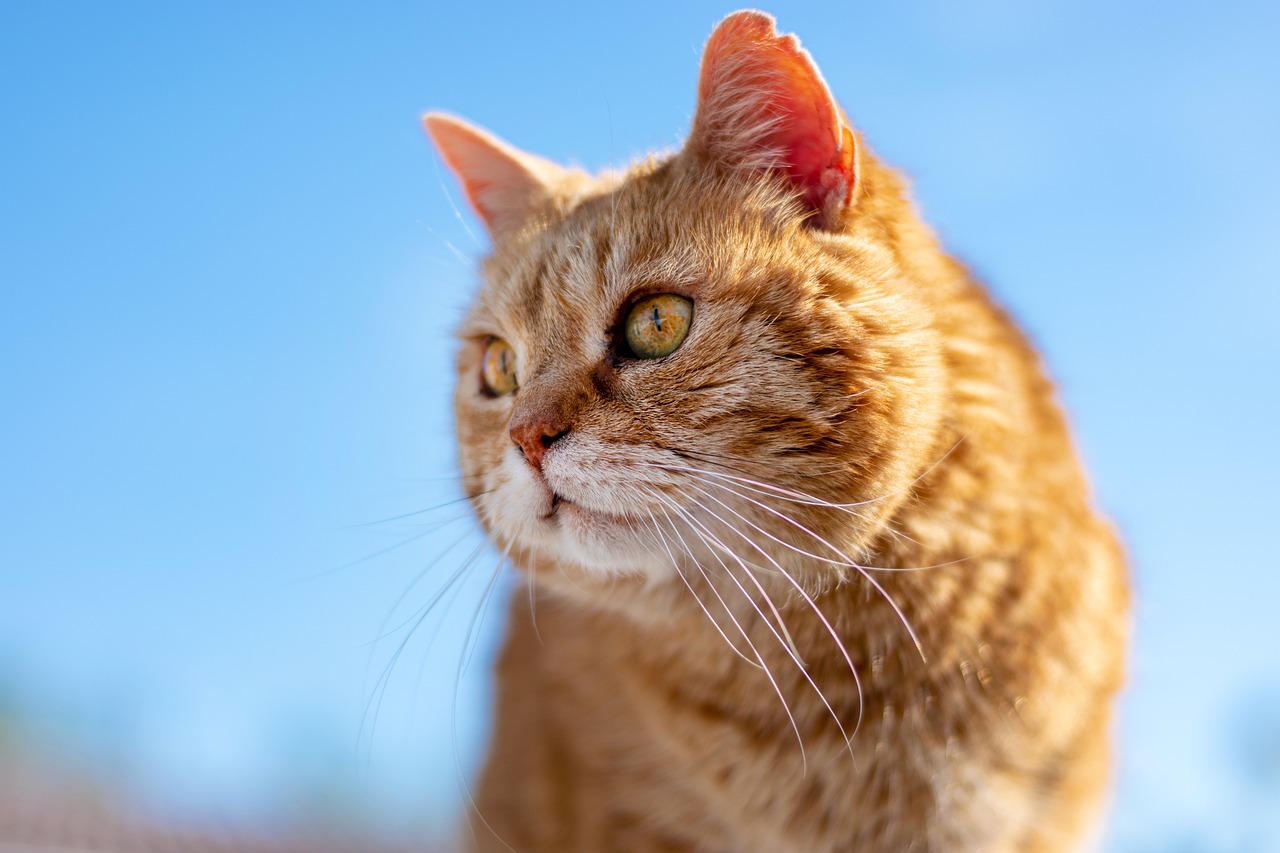
Understanding Your Pet's Anxiety
When it comes to grooming, many pet owners often overlook a critical aspect: understanding their pet's anxiety. Just like humans, pets can experience stress and anxiety, especially in situations that involve unfamiliar sounds, smells, or handling. Recognizing the signs of anxiety is crucial for creating a positive grooming experience. Common behaviors that indicate stress may include excessive barking, hiding, trembling, or even aggression. If your furry friend exhibits any of these signs, it’s essential to address them effectively to ensure their comfort.
Imagine you're at a crowded party, surrounded by loud music and unfamiliar faces. You might feel anxious, right? Now, think about how your pet feels when they’re taken to a grooming salon or subjected to a bath at home. They might not understand what's happening, and that uncertainty can lead to fear. To help your pet cope, start by observing their body language. For instance, a tucked tail, flattened ears, or wide eyes can be clear indicators that your pet is feeling uneasy.
Another important factor to consider is the environment. If your grooming area is chaotic or filled with distractions, it can heighten your pet's stress levels. Creating a calm and quiet space can make a world of difference. You might want to designate a specific area in your home where grooming takes place, ensuring it’s free from loud noises and sudden movements. This familiar setting can help your pet feel more at ease.
Additionally, it’s worth noting that different pets react differently to grooming. For example, a dog may respond to grooming with excitement or anxiety, while a cat might become more withdrawn. Understanding your pet’s unique personality traits is vital. You can even keep a journal of their behaviors during grooming sessions to track what works and what doesn’t. This way, you can tailor your approach based on their specific needs.
In conclusion, understanding your pet's anxiety is the first step toward making grooming a stress-free experience. By paying attention to their signs of distress and creating a comfortable environment, you can significantly improve their grooming sessions. Remember, patience and empathy go a long way in helping your furry friend feel safe and secure.
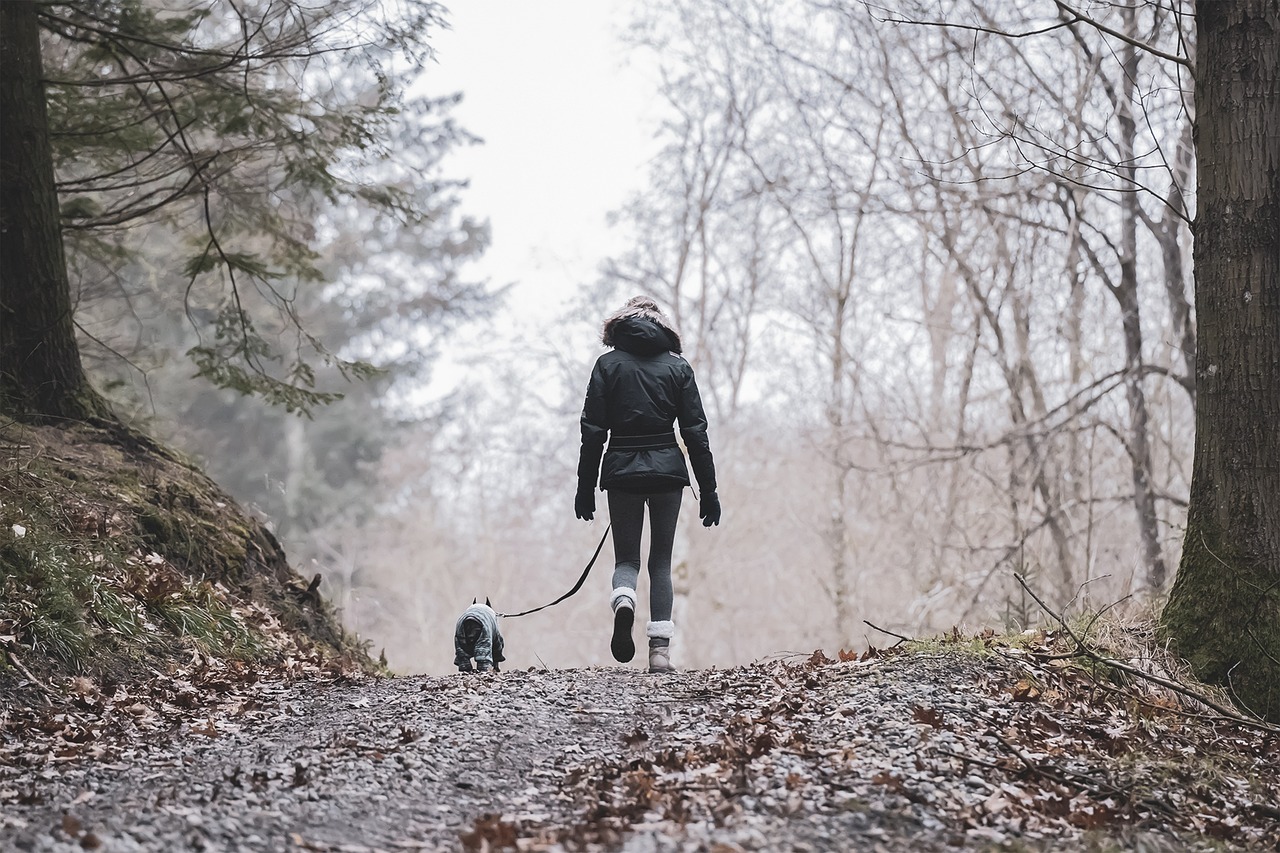
Creating a Comfortable Grooming Environment
Creating a calm and inviting grooming environment for your pet is essential for a positive experience. Think of it as setting the stage for a relaxing spa day—just for your furry friend! The right atmosphere can make all the difference, helping to alleviate anxiety and ensuring that grooming sessions are as stress-free as possible.
First and foremost, consider the location of your grooming area. Choose a quiet spot in your home, away from loud noises and distractions. If you have children or other pets, try to keep them in another room during grooming sessions. A serene environment can help your pet feel more secure and relaxed. You might even want to use a soft mat or blanket for added comfort, something that feels familiar to them. This can be likened to how we all feel better when we’re in our favorite cozy spot.
Next, pay attention to the lighting. Natural light is great, but if that’s not possible, ensure the area is well-lit without being harsh. Soft, diffused lighting can create a soothing atmosphere. You might even consider using a calming diffuser with pet-safe essential oils (like lavender) to help create a tranquil environment. Just like we use aromatherapy to unwind, our pets can benefit from it too!
Sound also plays a significant role in creating a calm grooming space. Consider playing soft music or nature sounds in the background. Research shows that certain types of music can have a calming effect on pets, which can be particularly useful during grooming. You can think of it as creating a peaceful soundtrack to their grooming experience. Just be sure to keep the volume low to avoid startling them.
Furthermore, the right grooming tools can enhance the experience. Ensure that all your grooming equipment is organized and within reach. A cluttered space can create unnecessary stress, both for you and your pet. Consider investing in a grooming caddy or basket to keep everything tidy. When your pet sees you confidently reaching for tools, they’ll feel more at ease, knowing you’re in control.
Lastly, don’t forget about treats and rewards. Having some of your pet’s favorite treats on hand can create positive associations with grooming. Every time you finish a grooming task, reward them! This method not only makes the session more enjoyable for your pet but also encourages them to cooperate. It’s like giving them a little present for being so brave!
In summary, creating a comfortable grooming environment involves careful consideration of location, lighting, sound, organization, and rewards. By setting the right mood, you can transform grooming from a stressful chore into a delightful bonding experience. Remember, a little planning goes a long way in ensuring that grooming sessions are a walk in the park rather than a dreaded trip to the salon!
- How can I tell if my pet is anxious during grooming? Look for signs such as excessive panting, hiding, or attempting to escape. These behaviors indicate that your pet may be feeling stressed.
- What types of music are best for calming my pet? Soft classical music or gentle nature sounds are often recommended for creating a soothing atmosphere.
- Can I use essential oils around my pet? Always consult with your veterinarian before using essential oils, as some can be harmful to pets. Stick to pet-safe options like lavender.
- How often should I groom my pet? It varies by breed, but generally, regular grooming every few weeks is beneficial. Consult your vet for specific recommendations for your pet.
Choosing the Right Tools
When it comes to grooming your pet, the tools you use can make all the difference. Just like a painter needs the right brushes to create a masterpiece, you need the appropriate grooming tools to ensure your furry friend has a positive experience. Selecting the right tools not only helps in achieving a neat appearance but also plays a significant role in keeping your pet calm and comfortable during the grooming process.
First and foremost, consider the type of pet you have. Different breeds have varying coat types, which require specific tools. For example, long-haired breeds like Persian cats or Golden Retrievers benefit from slicker brushes and wide-toothed combs that can easily detangle their fur without causing discomfort. On the other hand, short-haired breeds, such as Beagles or Boxers, may only need a rubber grooming mitt or a bristle brush to keep their coats shiny and healthy.
It’s also essential to look for tools that are ergonomically designed, as they can significantly reduce the strain on your hands and wrists during grooming. A comfortable grip can make the process smoother for both you and your pet. Additionally, tools with soft edges can prevent accidental nicks and cuts, which can lead to anxiety in your pet. Here’s a quick overview of some essential grooming tools and their purposes:
| Tool | Best For | Benefits |
|---|---|---|
| Slicker Brush | Long-haired breeds | Detangles fur without pulling |
| Undercoat Rake | Double-coated breeds | Removes loose undercoat fur |
| Brushing Mitt | Short-haired breeds | Gentle brushing and massaging |
| Grooming Scissors | All breeds | Trimming fur safely |
Another critical factor to consider is the noise level of the tools. Some pets are particularly sensitive to loud sounds, which can trigger anxiety. If your pet is skittish, opt for quieter clippers or brushes that won’t startle them. It's also a good idea to introduce these tools gradually. Let your pet sniff and explore the tools before you start grooming. This way, they can associate the tools with positive experiences rather than fear.
In conclusion, choosing the right grooming tools is not just about aesthetics; it’s about creating a calming environment that fosters trust between you and your pet. By carefully selecting tools that cater to your pet’s specific needs, you can help transform grooming from a stressful ordeal into a relaxing bonding experience. Remember, the right tools can be the difference between a happy pet and a stressed-out one!
Grooming Products to Avoid
When it comes to grooming your beloved pet, not all products are created equal. In fact, some grooming products can actually do more harm than good, leading to increased anxiety and discomfort for your furry friend. Understanding which products to avoid is essential for creating a peaceful grooming experience. First and foremost, steer clear of grooming products that contain harsh chemicals or strong fragrances. Many pets have sensitive skin, and these substances can cause irritation, rashes, or even allergic reactions. For instance, shampoos and conditioners that are formulated for humans often have ingredients that are too harsh for pets.
Another category of products to avoid includes those with alcohol-based ingredients. Alcohol can dry out your pet's skin, leading to further discomfort and potential anxiety during grooming sessions. Instead, look for pet-specific grooming products that are designed with your pet's unique needs in mind. When selecting grooming supplies, always check the labels for ingredients that are natural and hypoallergenic.
Additionally, be cautious with grooming tools such as brushes and combs. Some brushes might have bristles that are too stiff or sharp, which can hurt your pet and make them anxious about being groomed. Opt for tools that are specifically designed for your pet's coat type. For example, a slicker brush may work well for long-haired breeds but could irritate short-haired pets. Always consider your pet's comfort when choosing grooming products.
To help you make informed choices, here's a quick table summarizing the types of grooming products to avoid:
| Product Type | Why to Avoid |
|---|---|
| Human Shampoos | Harsh chemicals and fragrances can irritate pet skin. |
| Alcohol-based Products | Can dry out skin and cause discomfort. |
| Stiff Brushes | May cause pain and anxiety during grooming. |
In summary, being mindful of the grooming products you choose can significantly impact your pet's grooming experience. By avoiding harsh chemicals, alcohol-based ingredients, and uncomfortable tools, you can help ensure that grooming becomes a more enjoyable and less stressful activity for both you and your furry companion. Remember, a little effort in selecting the right products goes a long way in building a positive grooming routine!
Q: What should I look for in a pet shampoo?
A: Look for shampoos that are specifically formulated for pets, with natural ingredients and no harsh chemicals. Hypoallergenic options are great for sensitive skin.
Q: How can I tell if a grooming product is safe for my pet?
A: Always read the ingredient list carefully. Avoid products with alcohol, artificial fragrances, or known allergens. Opt for products labeled as pet-safe.
Q: Are there any grooming tools that are universally safe for all pets?
A: Not really! Each pet has unique grooming needs based on their coat type. Always choose tools that are tailored for your pet's specific fur type.
Tools for Positive Reinforcement
When it comes to grooming your pet, the right tools for positive reinforcement can make all the difference in creating a calm and enjoyable experience. Think of these tools as your secret weapons in the battle against grooming anxiety. Just like a chef needs the right utensils to create a delicious meal, you need effective tools to help your furry friend feel safe and relaxed during grooming sessions.
First and foremost, treats are a crucial component of positive reinforcement. These tasty morsels serve as instant rewards for your pet's good behavior, encouraging them to associate grooming with something enjoyable. Opt for small, soft treats that your pet can easily chew and swallow. This way, you can reward them frequently without overwhelming their stomach. For example, if your dog remains calm while you brush their fur, a quick treat can reinforce that behavior and motivate them to stay relaxed.
In addition to treats, toys can also play a significant role in making grooming sessions more pleasant. Consider using a favorite toy as a distraction during the grooming process. You might hold the toy in front of them to keep their focus away from the clippers or brushes. This not only diverts their attention but also creates a positive association with grooming time. Just imagine how much easier it would be if your pet saw the grooming session as a chance to play with their beloved toy!
Moreover, praise and affection are powerful tools that should not be overlooked. Verbal affirmations like “good boy” or “well done” combined with gentle petting can significantly boost your pet's confidence. Dogs and cats alike thrive on positive feedback, and your encouraging words can help alleviate their stress. When your pet feels loved and appreciated, they are more likely to remain calm and cooperative during grooming.
To help you choose the right positive reinforcement tools, here’s a quick table summarizing some effective options:
| Tool | Purpose |
|---|---|
| Treats | Reward good behavior and create positive associations with grooming. |
| Toys | Distract your pet and keep them engaged during grooming. |
| Praise and Affection | Boost confidence and reinforce calm behavior. |
Incorporating these tools into your grooming routine can transform the experience for both you and your pet. Remember, the goal is to create a positive environment where your furry friend feels secure and happy. The more you can make grooming a fun and rewarding experience, the more likely your pet will look forward to it in the future. So, gather your treats, toys, and kind words, and get ready to turn grooming time into a bonding experience that strengthens your connection with your pet!
- What types of treats are best for positive reinforcement during grooming? Small, soft, and easily chewable treats work best as they can be given frequently without overwhelming your pet.
- Can I use toys as a distraction during grooming? Absolutely! Using a favorite toy can help keep your pet engaged and distracted from the grooming process.
- How important is praise in calming my pet during grooming? Very important! Verbal praise and affection can significantly boost your pet's confidence and help them feel more at ease.
Establishing a Routine
Establishing a consistent grooming routine is one of the most effective ways to help your pet feel more secure and calm during grooming sessions. Just like humans, pets thrive on predictability and familiarity. When you create a regular schedule for grooming, your furry friend begins to associate those moments with comfort and care rather than anxiety and stress. Think of it as creating a comforting ritual—much like your morning coffee or evening wind-down routine. Over time, your pet will start to look forward to these sessions, knowing they are part of a regular, loving process.
To start, choose specific days and times for grooming. Consistency is key. For example, you might decide to groom your pet every Saturday morning. By sticking to this schedule, you help your pet develop an understanding of what to expect. You can even use a calendar or set reminders on your phone. This way, you’ll never miss a session, and your pet will learn to anticipate the upcoming grooming time.
It’s also important to keep the grooming sessions short and positive, especially in the beginning. If your pet is new to grooming, start with just a few minutes of brushing or bathing, gradually increasing the duration as your pet becomes more comfortable. You can also incorporate breaks, allowing your pet to relax and play with a favorite toy or receive a treat during these pauses. This not only makes the experience more enjoyable for them but also reinforces the idea that grooming is a fun and rewarding activity.
As you establish this routine, be sure to observe your pet’s reactions. If they seem anxious or restless, it might be a sign to slow down or adjust your approach. Every pet is unique, and what works for one might not work for another. You might find it helpful to keep a grooming journal, where you can note your pet's behavior and preferences. This can help you fine-tune your routine over time, ensuring that it meets your pet's needs.
In addition to the physical aspect of grooming, consider incorporating some calming techniques into your routine. For instance, you might play soft music or use soothing scents, like lavender, to create a more tranquil environment. Remember, the goal is to transform grooming from a chore into a cherished bonding time between you and your pet. So, take a deep breath, stay patient, and enjoy the process!
- How often should I groom my pet?
It depends on the breed and coat type. Long-haired breeds may require grooming several times a week, while short-haired breeds might only need it once a month. - What if my pet doesn't like grooming?
Start slowly and make it a positive experience with treats and praise. Establishing a routine can also help them adjust over time. - Can I groom my pet at home?
Absolutely! With the right tools and techniques, you can groom your pet at home. Just ensure you’re comfortable and knowledgeable about the grooming process.
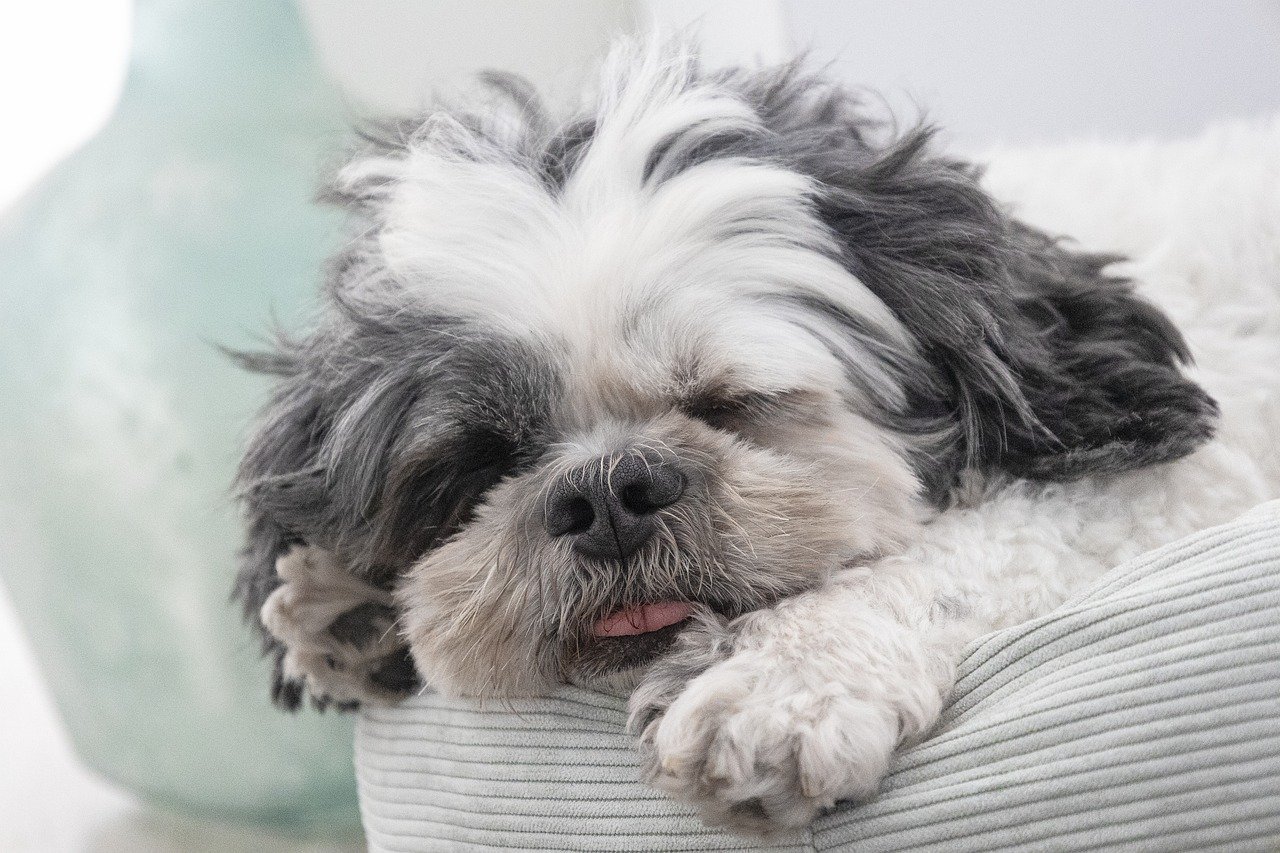
Techniques to Calm Your Pet
When it comes to grooming your furry friend, anxiety can be a significant hurdle. Fortunately, there are various techniques you can implement to help your pet feel more at ease during these sessions. Think of grooming as a necessary task, much like going to the dentist for us humans. Just as we might feel a bit jittery before a check-up, our pets can experience similar feelings. The key is to create a calm and reassuring atmosphere that makes them feel safe and secure.
One effective technique is to practice deep breathing yourself. Yes, you heard that right! Animals can be incredibly perceptive, and they often mirror our emotions. By taking a few deep breaths and exhaling slowly, you not only calm yourself but also send a message to your pet that everything is okay. Imagine your pet watching you, noticing your calm demeanor, and feeling reassured. This simple act can set the tone for the entire grooming session.
Another method is to incorporate gentle handling. Instead of rushing through the grooming process, take your time. Start with short sessions that focus on one area at a time. For instance, you might begin by gently brushing your pet's back, offering praise and treats as you go. This approach not only helps to build trust but also allows your pet to associate grooming with positive experiences. Over time, your pet will likely look forward to these moments, much like how we might anticipate a relaxing spa day.
Additionally, consider the power of music and sounds. Playing soft, calming music can create a soothing environment that helps alleviate anxiety. There are even specialized playlists designed specifically for pets! Think of it as creating a serene backdrop, much like how we might enjoy a peaceful ambiance while reading a book. You might be surprised at how much your pet responds to this auditory comfort.
Another technique worth exploring is incorporating massage and touch. Gentle petting and massage can work wonders in calming your furry friend. By focusing on areas like the neck and shoulders, you can help release tension and create a more relaxed state. This not only makes grooming easier but also strengthens your bond with your pet. It's akin to a warm hug that says, "I've got you; everything is going to be okay!"
Lastly, remember that consistency is key. Establishing a routine can significantly reduce your pet's anxiety. If your pet knows when to expect grooming sessions, they are more likely to approach the experience with a sense of calm. Just like we thrive on routine, pets do too! So, mark your calendar, set a reminder, and make grooming a regular part of your pet's life.
In summary, calming your pet during grooming sessions involves a combination of techniques that prioritize their comfort. By practicing deep breathing, gentle handling, using soothing sounds, incorporating massage, and establishing a routine, you can transform grooming from a stressful chore into a bonding experience that both you and your pet will cherish.
Q: How long should grooming sessions last for anxious pets?
A: Start with short sessions, around 5 to 10 minutes, and gradually increase the duration as your pet becomes more comfortable.
Q: Can I use essential oils to calm my pet during grooming?
A: Some essential oils can be soothing, but always consult your veterinarian before using them, as some oils can be harmful to pets.
Q: What type of music is best for calming pets?
A: Soft classical music or specially curated pet relaxation playlists are often effective in creating a calming atmosphere.
Q: How can I tell if my pet is getting used to grooming?
A: Look for signs of relaxation, such as a relaxed body posture, wagging tail, or even your pet leaning into your touch.
Using Music and Sounds
When it comes to grooming your pet, one of the most effective yet often overlooked strategies is the use of music and sounds. Just like humans, pets can be influenced by their auditory environment. Imagine walking into a salon with loud clattering and chatter versus a serene space filled with soft melodies. Which would you prefer? The same goes for your furry friends. By playing calming music or soothing sounds, you can create an atmosphere that promotes relaxation and reduces anxiety.
Research has shown that certain types of music can have a profound effect on animals. For instance, classical music, with its gentle melodies and steady rhythms, can significantly lower heart rates and stress levels in dogs and cats alike. It's fascinating to think that a simple piece of music can transform a tense grooming session into a peaceful bonding experience. To help you get started, here are some genres that have been found to be particularly effective:
- Classical Music: Often recommended for its calming effects.
- Soft Jazz: The smooth tones can create a relaxed vibe.
- Nature Sounds: Sounds of rain, ocean waves, or birds can be very soothing.
Additionally, you might want to consider creating a playlist specifically for grooming sessions. This way, every time your pet hears those familiar tunes, they’ll start to associate them with positive experiences. Think of it as their own personal soundtrack that signals it’s time to relax. You could even play the music a few times before grooming to help your pet get used to the sounds.
Furthermore, it’s not just about the music; the volume matters too. Keeping the volume at a moderate level is essential. Too loud, and it could become overwhelming; too soft, and it might not have the desired effect. Experiment with different sounds and volumes to find what works best for your pet. You might be surprised at how quickly they respond to a soothing auditory backdrop.
Incorporating music into your grooming routine not only helps to calm your pet but also enhances the overall experience for both of you. It creates a peaceful environment that encourages trust and cooperation. So, the next time you prepare for a grooming session, don’t forget to hit play on that calming playlist. Your pet will thank you for it!
Q: What type of music is best for calming my pet?
A: Generally, classical music, soft jazz, and nature sounds are found to be the most effective for calming pets.
Q: How loud should I play the music during grooming?
A: Keep the volume at a moderate level—loud enough to be heard but not so loud that it becomes overwhelming for your pet.
Q: Can I use music for other stressful situations?
A: Absolutely! Music can be beneficial in various situations, such as during thunderstorms, vet visits, or when introducing new experiences.
Q: Should I play the same music every time?
A: Yes, creating a consistent playlist can help your pet associate those sounds with a calm and positive experience.
Incorporating Massage and Touch
When it comes to grooming your pet, incorporating massage and touch can be a game changer. Just like humans, pets can experience stress and anxiety, especially during grooming sessions. Imagine how soothing a gentle touch can be! By using massage techniques, you can help your furry friend relax, making the entire grooming process smoother and more enjoyable for both of you.
Start by creating a calm atmosphere before you begin. Dim the lights, play some soft music, and make sure your pet feels safe. When you're ready, approach your pet slowly and let them sniff your hands. This simple act of establishing trust can make a world of difference. Once they seem comfortable, gently stroke their body, focusing on areas where they hold tension. Pets often carry stress in their shoulders, back, and neck, so these are great places to start.
As you massage, pay attention to your pet's body language. If they lean into your touch or close their eyes, you’re on the right track! However, if they pull away or seem tense, it’s crucial to respect their boundaries. You can also use a variety of techniques, such as:
- Long strokes: Use the palm of your hand to make long, smooth strokes down your pet's body to promote relaxation.
- Gentle kneading: Mimic the way a cat kneads by using your fingers to apply gentle pressure in circular motions.
- Light tapping: Use your fingertips to lightly tap along your pet's back or sides, which can stimulate circulation and relaxation.
Incorporating touch doesn’t just have to be about massage; simple petting can also be incredibly soothing. Try alternating between gentle strokes and massage techniques to keep your pet engaged. You might even consider using specialized grooming gloves that allow you to brush and massage at the same time. This dual-purpose tool can help your pet associate grooming with positive sensations, making them more likely to remain calm during future sessions.
Remember, the goal is to create a positive association with grooming. By making it a pleasant experience with the right mix of touch and massage, you’ll not only help your pet stay calm but also strengthen your bond. So, the next time you pull out the grooming tools, don’t forget to include a little TLC!
Q: How often should I groom my pet?
A: The frequency of grooming depends on your pet's breed and coat type. Generally, long-haired breeds may require grooming several times a week, while short-haired breeds can be groomed less frequently, perhaps once a month.
Q: What if my pet doesn't like being touched?
A: It's essential to go at your pet's pace. Start with short sessions and gradually increase the duration as they become more comfortable. Always use positive reinforcement to encourage calm behavior.
Q: Are there specific products that can help with anxiety during grooming?
A: Yes! There are calming sprays and pheromone diffusers designed to soothe anxious pets. Additionally, using treats or toys as distractions can help alleviate stress.
Q: Can I use massage on all types of pets?
A: While most pets can benefit from gentle massage, always consult with your veterinarian if your pet has any pre-existing conditions or injuries before starting any massage technique.
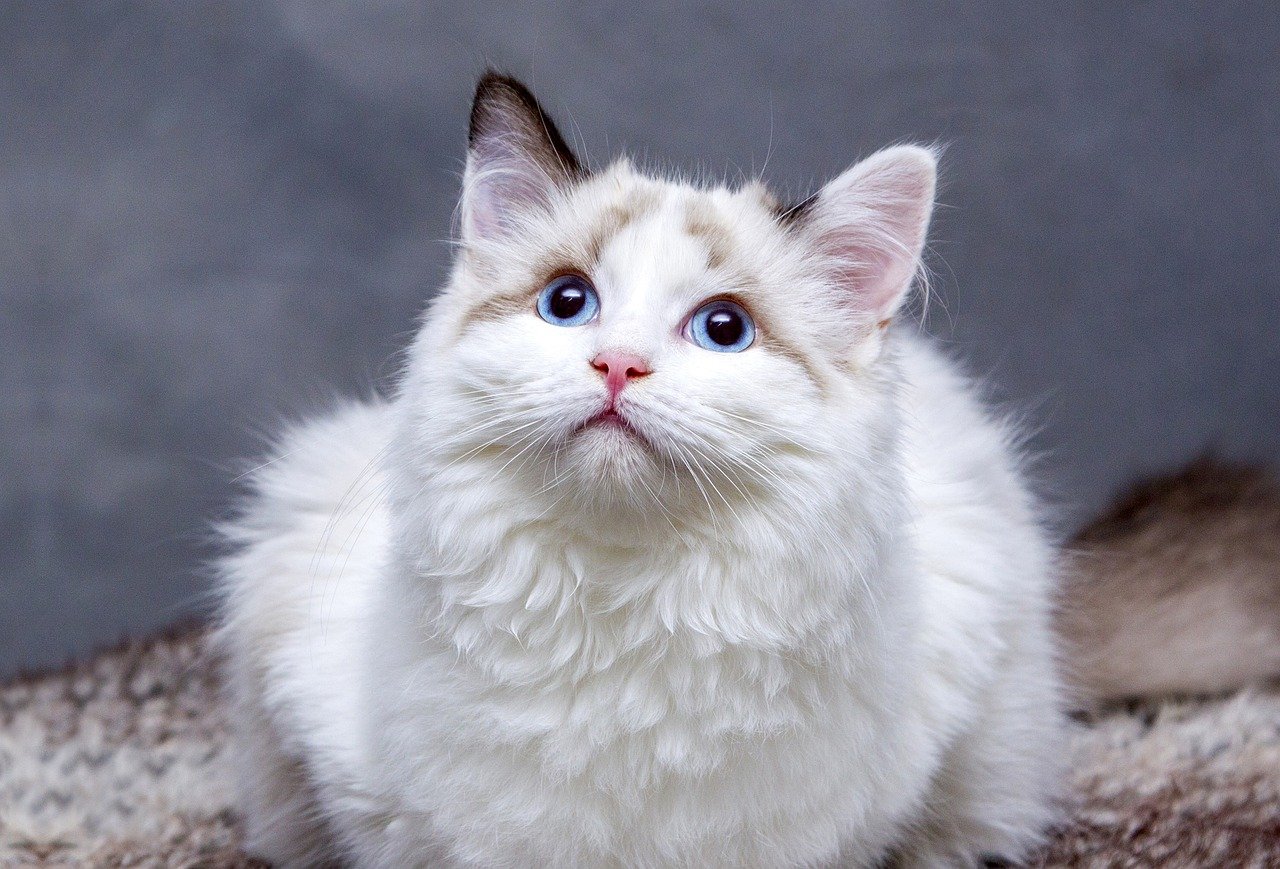
Recognizing Progress and Adjusting Techniques
When it comes to grooming your pet, recognition of progress is essential. Just like humans, pets can have varying levels of anxiety, and understanding their journey is crucial to making each grooming session a positive experience. One of the first things you should do is observe your pet closely. Are they becoming more relaxed over time? Do they seem less fidgety or anxious? These subtle signs can indicate that your pet is adjusting well to the grooming process.
It's important to document your observations. Keeping a journal of each grooming session can help you track changes in your pet's behavior. For instance, if you notice that your dog no longer tries to escape the grooming area or your cat purrs instead of hissing, those are significant milestones. You might want to note specific details such as:
- Duration of grooming sessions
- Pet's behavior before, during, and after grooming
- Any particular techniques or tools that worked well
As you monitor these factors, you may find that some techniques need adjustment. For example, if your pet is still showing signs of distress, it might be time to try a different approach. Consider experimenting with calming techniques or changing the grooming tools you're using. Sometimes, a simple switch can make all the difference. If you find that your pet responds positively to gentle music, for instance, make it a staple during grooming sessions.
Another key aspect is to celebrate the small victories. If your pet allows you to brush them for a few minutes longer than before, that’s a win! Use positive reinforcement to encourage this behavior. Treats, praise, or even a favorite toy can be powerful motivators. Just remember, the goal is to create a positive association with grooming, so be generous with your praise and rewards.
Lastly, don't hesitate to consult with a professional groomer or a veterinarian if you're unsure about your pet's progress. They can offer valuable insights and might suggest techniques you haven’t considered. Every pet is unique, and what works for one may not work for another. This is why being flexible and willing to adjust your methods is so important.
In summary, recognizing progress in your pet's grooming journey is about being observant, documenting changes, adjusting techniques, and celebrating achievements. With patience and understanding, you can help your furry friend feel more comfortable and relaxed during grooming sessions.
Q1: How long does it take for a pet to get used to grooming?
A1: The time varies depending on the pet's temperament and past experiences. Some may adjust in a few sessions, while others may take weeks or even months.
Q2: What should I do if my pet becomes aggressive during grooming?
A2: If your pet shows signs of aggression, it’s best to stop and reassess the situation. Try using calming techniques, or consult a professional trainer for guidance.
Q3: Can I use human grooming products on my pet?
A3: No, human grooming products can irritate your pet’s skin and coat. Always choose products specifically designed for pets.
Q4: How can I tell if my pet is comfortable during grooming?
A4: Look for relaxed body language, such as a wagging tail or soft eyes. If your pet is actively engaging with you, it’s a good sign they feel comfortable.
Frequently Asked Questions
- What are the common signs of anxiety in pets during grooming?
Pets may show signs of anxiety through behaviors like excessive panting, hiding, vocalizing, or trying to escape. Understanding these signs is the first step in helping your furry friend feel more comfortable during grooming sessions.
- How can I create a calming grooming environment for my pet?
To create a soothing environment, choose a quiet space away from distractions, use soft lighting, and ensure the area is free from sudden noises. Adding familiar blankets or toys can also help your pet feel more secure.
- What tools should I use for grooming my pet?
Select grooming tools that are appropriate for your pet's coat type. For example, slicker brushes work well for long-haired pets, while bristle brushes are better for short-haired breeds. Using the right tools can make the grooming process smoother and less stressful.
- Are there grooming products I should avoid?
Yes, avoid grooming products that contain harsh chemicals or strong fragrances, as these can irritate your pet's skin or trigger anxiety. Always opt for pet-safe, hypoallergenic products to ensure a pleasant grooming experience.
- How can I use positive reinforcement during grooming?
Incorporate treats, praise, and toys as rewards during grooming sessions. This positive reinforcement helps your pet associate grooming with good experiences, making them more likely to stay calm in the future.
- Why is establishing a grooming routine important?
Establishing a consistent grooming routine helps your pet become accustomed to the process, reducing anxiety over time. Routine creates familiarity, making each grooming session feel like a normal part of their day.
- What techniques can I use to calm my pet during grooming?
Techniques like deep breathing, gentle handling, and taking breaks can help calm your pet. Additionally, playing soft music or using sound therapy can create a relaxed atmosphere, making grooming less stressful.
- How can massage help during grooming?
Incorporating gentle massage can relax your pet and help them feel more at ease. It promotes bonding and can make the grooming experience more enjoyable for both you and your furry friend.
- How do I know if my techniques are working?
Monitor your pet's behavior during grooming sessions. If they seem more relaxed, less resistant, or show fewer signs of anxiety over time, it's a sign that your techniques are effective. Adjust your approach as needed to continue improving their experience.






